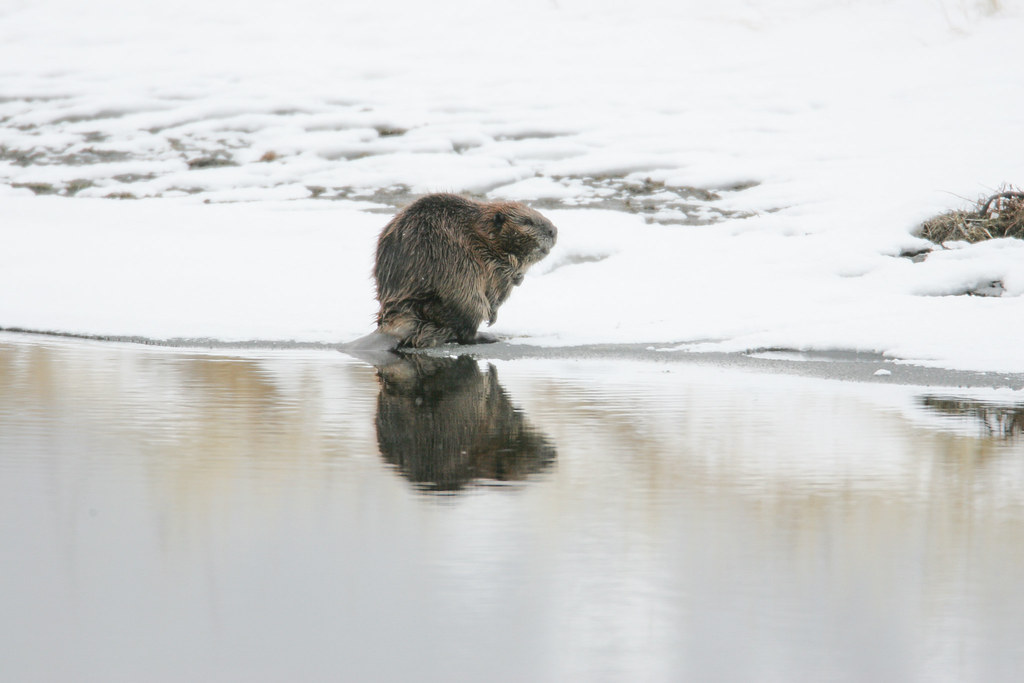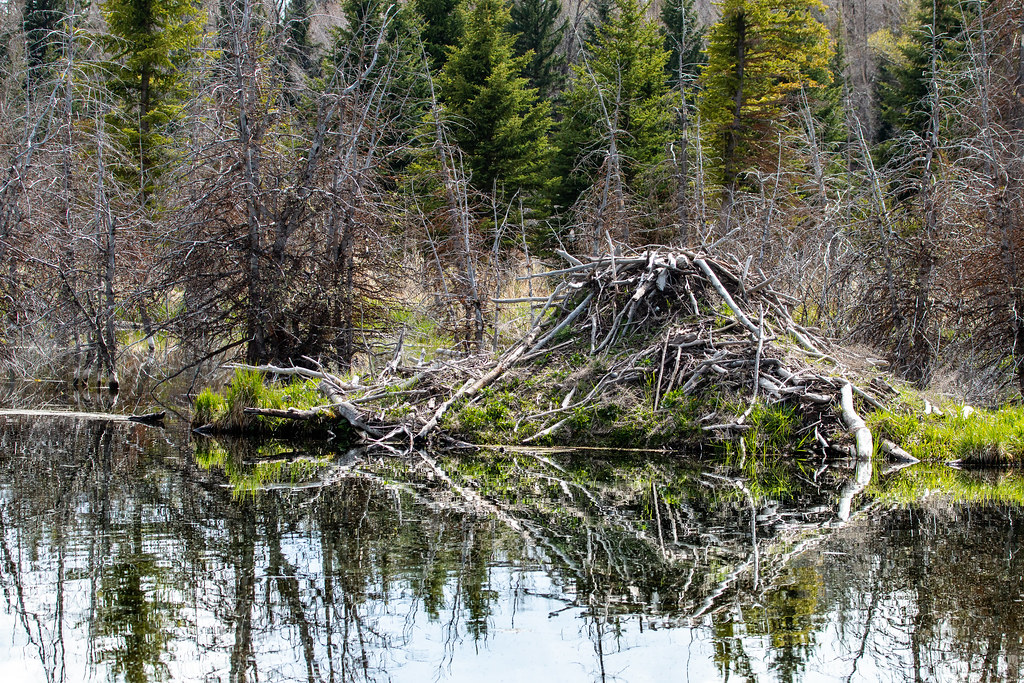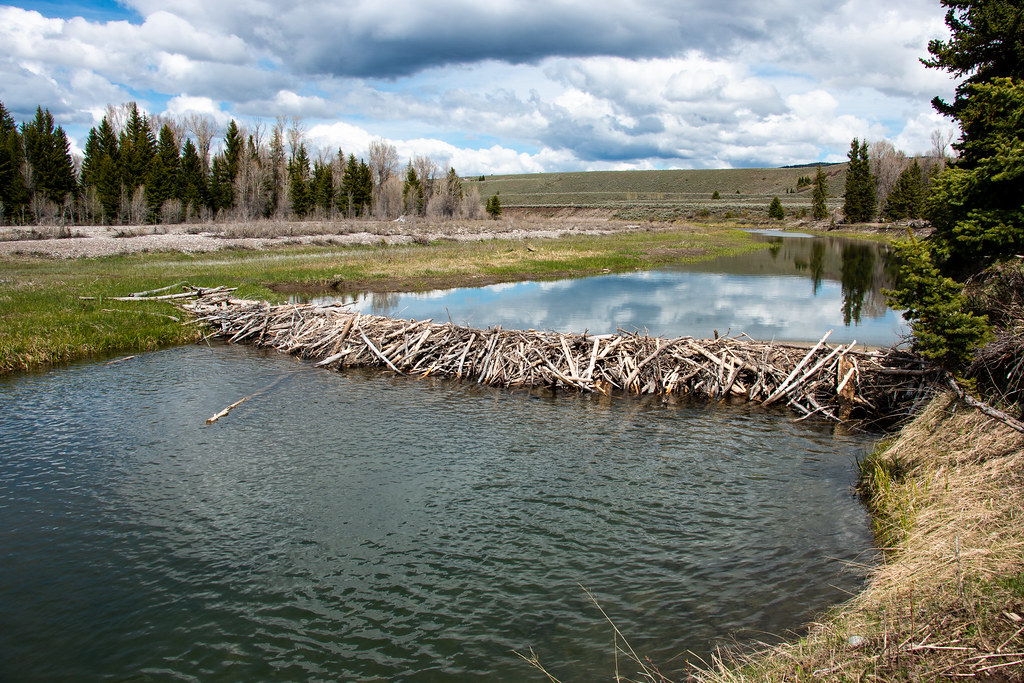Such An Improbable Animal

Beavers have adapted to the cold, but not in the ways you might think. Photo/Beaver, Yellowstone National Park Service
If you or I had the assignment to design an animal well-adapted to the winter rigors of central Canada and north to the Arctic tundra, what would the critter look like? For many of us, the polar bear might be our reference – massive build, heavy fur coat plus a layer of fat, fatty high-calorie diet of seals, ability to hibernate under the snow for the coldest part of winter, etc. For others of us, it might be the arctic wolf; long distance runners and efficient hunters, who can gobble down 10 pounds of meat and curl up in a bundle together on a cold night to keep each other warm.
But how many of us would start off referencing a large rodent who doesn’t hibernate, that consumes a diet of barely digestible tree bark and has short legs and a chubby body? Sounds like a loser doesn’t it? But that’s the American beaver, which thrives almost as far north as there are trees. How do they succeed with such a seemingly poor design? Generations of biologists have been intrigued and generations of beavers have had their lives spied upon with thermocouples, hidden cameras, needles and air samplers. The results of this research are hardly mind-boggling, having been surmised by the early naturalists armed with the same curiosity and patient observation.
One of the beavers’ compensations for lower environmental temperatures and poor food is to not fight the cold by trying to overcome it with body heat. This seems strange to us because our species has only been a northern animal for less than a half-million years, and hasn’t learned to do this very well yet. But with the onset of winter, the northern beaver dials back its thyroid gland by about 40 percent, lowers its body temperature and its metabolism, and conserves a lot of energy. Beaver species have been through the entire Ice Ages with more opportunity to develop thermal control. Perhaps the Scandinavian folks who enjoy a winter swim in ice water are on their way toward developing or maintaining a winter-adapted metabolism, which can be passed on to the next generations. Like the beavers, Scandinavians do not hibernate. Some native people around the world used to have the ability to maintain lower body temperature and keep on functioning.
Northern beavers also build a house for protection from the cold and hostile neighbors. Their lodge is made of sticks plastered together with mud. The door (sometimes two doors) is in the floor so they can swim out underwater, grab some lunch and swim back up into the lodge with it. Before winter, they add an extra layer of mud with stones and sticks to the lodge, which after it freezes is good protection from bears and wolves who might try to dig their way in. Thermocouples placed in occupied lodges in central Canada record a nearly constant temperature all winter in the low to mid-40s. The mud plaster is omitted from the top of the lodge to allow air exchange, and on a frosty morning you can see whether a lodge is occupied by the wisp of mist coming out of the top.
For many centuries, the peasants of northern Europe lived in little “wattle and daub” homes. The better quality ones were an inverted basket made of slender flexible sticks woven through slender arched poles stuck in the ground, and then the basket was plastered with mud. A smoke hole was left unplastered in the top. In autumn, leaves were piled up against the outside of the house, held in place by sticks and branches, producing a structure that rather resembled a beaver lodge. There is a European beaver quite similar to the American beaver.
And beavers stockpile a winter food supply if they live north of about 38 degrees north latitude, which is about the latitude of St. Louis and Cincinnati. At first glance in late autumn it just looks like a raft of sticks beside the lodge. But closer inspection reveals that the favored edible species, like aspen, willow and cottonwood, are at the bottom of the raft, weighted down with less desirable species like spruce and already peeled and inedible logs. The reason for this design is that the upper unappetizing layer will freeze into the ice in winter, while the good stuff is available below in the winter to a beaver swimming out below the ice from the lodge. Back in 1972, when I had a late spring field project a few hundred miles south of the Arctic Circle, I saw several food rafts weighted with rocks amongst the top layer of logs and sticks. These are thinking animals.
Upscale grocery stores today offer whole isles devoted to high fiber diet foods containing few calories. Reading the labels makes me wonder whether the main ingredient is sawdust. Compared to the beaver, our species is a latecomer to the North Country, and we’ve been slowly adapting or readapting some of the traits that they perfected long ago. Improbable animals.




